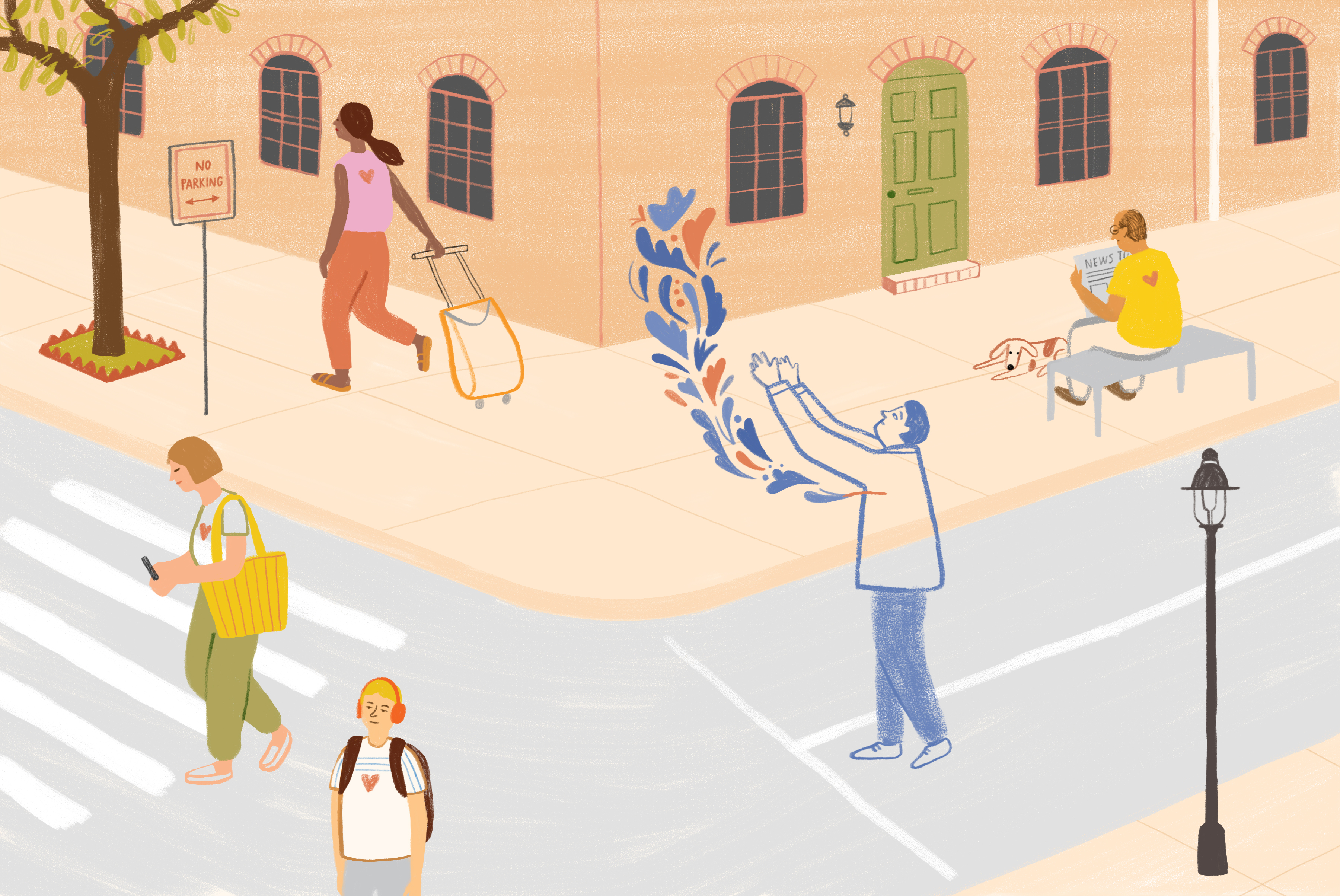
What I Learned About the Heart from a Man Who Lost His
Image by Mónica Andino, © All Rights Reserved.
Carlos began to lose his heart when he was a teenager. He wasn’t lovesick. He didn’t even think he was sick. He blamed himself for being fatigued, for feeling depressed, for having a body that some days wanted nothing.
His mother noticed, and she worried about him. She yelled at him. Nothing helped.
The familiar exhortation of “listen to your heart” does not point out that the heart speaks its own language. Listen to your heart, but who teaches you the syntax of the organ? Its vocabulary and intonations? Who teaches you that the heart cries out in alarm by exhausting you? By taxing your lungs?
When he was a teenager, Carlos’s heart was trying to tell him this: a parasite had invaded his body. The microbe had evaded his immune system and was now multiplying inside the tissue of his heart. The parasite would spend decades eating away at his heart.
The corazón, the heart, is an accordion. It expands inside the ribcage, then squeezes. It belts out the familiar tune, the thrumming that physicians in the early 1800s called a whip and sometimes a dog’s tongue lapping. The heart is an accordion sculpted from arteries and valves, nodes and neurons.
Dr. Pierre Mere Latham, one of the fathers of modern cardiology, insisted that the musical movements of the heart cannot be squeezed into paragraphs. “It is useless to describe them,” he wrote in 1836 about the heart’s varied sounds. Dr. Latham considered the ear a “trustworthy witness.” A doctor, he reasoned, needed to cultivate this witness with both an education and the practice of placing an ear to the chests of many patients over many years.
I listened to Carlos, and so even though cardiologists call the heart a pump, the way Carlos spoke to me about his corazón made me think of accordions. Or maybe it was because the parasite decimated the walls of his heart and required him to carry a small messenger bag in his hands by the time he was in his early forties and living in Maryland. Inside the messenger bag, a battery hummed. It powered a device that had been stitched to Carlos’s heart and that pumped his left ventricle.
Carlos’s heart had reached end-stage heart failure. One doctor described the device to me as a bridge to a heart transplant. If the device failed, if the battery stopped, if Carlos didn’t get to a hospital in time, he would die.
I stared at the black messenger bag in Carlos’s brown hands and thought of accordions, of what a man can hold in his hands.
As a teenager in Central America, Carlos had dark eyes, short eyelashes, hair as sleek as butterfly wings. When he began to feel fatigued, he did not suspect the beetle-like insects that skittered out at night dropping from crevices in the wall of his family home. Who ever heard of a chinche wanting your heart?
In Latin America, this nocturnal insect has many names: chinches, yes, but also vinchucas and pitos. The same is true in the United States. The insect has been called a blood sucker and a cone-nose. The most popular name today is “kissing bug” because in 1899, long after Dr. Latham was straining to make his ear trustworthy, people around the United States had allergic reactions to a bug bite that made their lips swell to awful proportions. No one could prove which insect was guilty or if the epidemic of allergic reactions was even due to a nocturnal insect bite or to the public imagination, but the name “kissing bug” stuck. It describes an insect scientists have named a triatomine. There are more than 9 species of this insect in Texas alone. They look like oversized beetles and have a straight proboscis they tuck under their heads.
In 1909, Dr. Carlos Chagas listened to the railroad workers in Brazil, hours from Rio de Janeiro. The men complained about the kissing bugs. Dr. Chagas sliced open one of the insects, and inside its hindgut, he found the parasite he named Trypanosoma cruzi. The disease, Chagas disease, was named after him.
Afflicting about 7 million people, most of them in Latin America, the parasite T. cruzi attacks the hearts of every one in three people who are infected. It eats away at the wall of the heart. It disrupts the electrical messages that determine the movements of the heart. In women who are pregnant, the parasite can pass from mother to child. In the United States, more than 300,000 people from Latin America have the disease — along with a few dozen Americans of all ethnicities who have been infected by kissing bugs native to Texas, California, and other sunny states.
The “kissing bug disease” is now considered to be one of the neglected tropical diseases along with leprosy and sleeping sickness. But even among neglected illnesses the kissing bug disease stands out. The New Yorker called it the redheaded step child of vector-born diseases because it doesn’t alert doctors with obvious clinical signs. Not all infected people get sick, and worse, the microbe takes decades to kill a person and does so silently. Think of a song trapped in your body. A song you can’t hear.
If Carlos had been diagnosed and treated as a child, his heart would have been spared. Children often recover from the parasitic disease with the medication benznidazole, but less than 1 percent of infected people, including children, receive treatment.
The idiom explains (or perhaps accuses?) that you “wear your heart on your sleeve.” But having spent the last four years working on a book about a parasite that can devour the heart, I have come to appreciate how hidden our hearts truly are, both in literal and metaphorical terms. No one in Carlos’s neighborhood on the outskirts of Washington, D.C. can look at him and say, There goes a man who lost his heart. We see so little of each other.
Maybe it’s a consequence of working on this book, but I have begun to wonder if this is the political problem of our times: we don’t see each other’s hearts. We see status updates and curated pictures and petitions asking us for support. But we do not sit in a living room on a Sunday afternoon and listen to a man anxious that his sister has lost refugee status overnight. We read another #MeToo story, but we don’t hear the bruises of the woman who went to elementary school with us. We don’t tell each other that on the morning when a presidential pardon was announced for Joe Arpaio, the Arizona sheriff who racially profiled Latinas and Latinos for years, some of us— fine, I mean me — I doubled over at the kitchen counter and my body convulsed trying to throw up before I’d had breakfast. Wear your heart on your sleeve, but sometimes these days your heart ends up on the kitchen floor.
In the 1800s, Dr. Latham urged his colleagues in the new field of cardiology about their ears: it “must be a well-educated and well-practiced ear, or it is not a trustworthy witness.” As a journalist, I have an educated ear, but I have been trained to listen for bad news: the statistics of those who died, who fell sick, who lost their hearts. Can the ear be trustworthy when it hears only wounds? I work almost daily against my own training. This is something more Americans are having to do these days. We have to set the intention to listen for the good news.
And so I pay attention when Carlos tells me that he lost his heart but he loves the one he received by way of a transplant. I listen to the good news that the FDA has approved a drug that can be used to treat the kissing bug disease in children and pregnant women. In Colombia, about five hours from the capital, on the second floor of a health clinic, I lean in to every word from Mayoly, a woman in her forties who will soon need a pacemaker. She has a thick black braid, and she beams a huge smile at me when explaining that the local hospital in the town of Soatá has the medicine she needs now. That is thanks to a joint effort by the organization Drugs for Neglected Diseases Initiative, Colombia’s national health ministry, and Boyacá’s Health Secretary.
None of this is exactly the equivalent of pressing my ear to the chest of a cardiac patient as Dr. Latham urged of his colleagues, but then again maybe it is.
